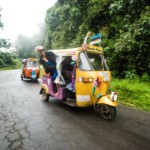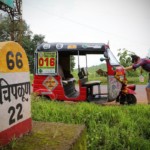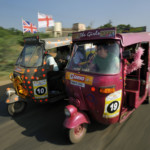When you’re in Mumbai, you won’t regret visiting Elephanta Caves.
There’s a lot to see in Mumbai, but visiting Elephanta Caves should be near the top of your list. And since the biggest city in India is where we start the Mumbai Xpress and finish the Deccan Odyssey Rickshaw Challenges, you have the perfect excuse to see these incredible caves. Here’s what you need to know!
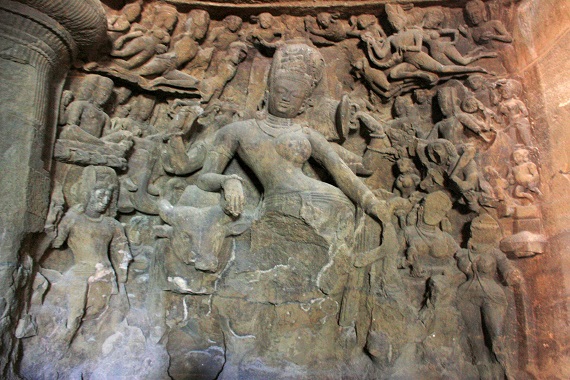
The History of the Caves
As with many of India’s most fascinating monuments, the beginnings of the Elephanta Caves are shrouded in mystery. The sculptures one finds there are so intricate and impressive that locals claim they cannot be not man-made. Historians aren’t certain from when they date, but suspect work began around one and a half millennia ago. Until the Portuguese arrived in the 16th century, the largest cave was an important spot for Hindu worship, while smaller caves were also dedicated to Buddhism. While the caves were neglected during European colonialism, in recent decades their status as a UNESCO World Heritage site has ensured renovation and increased protection.
What is Special about the Caves?
The cave complex at Elephanta contains some of the subcontinent’s most impressive rock carving. The Portuguese named the complex “Elephanta” after a sculpture of an elephant previously standing guard outside the caves (it can now be found at Mumbai’s Jijamata Udyaan zoo). The caves are located on Elephanta Island, sometimes known as Gharapuri, meaning “City of Caves”. The island is ten kilometres to the east of Mumbai Harbour.
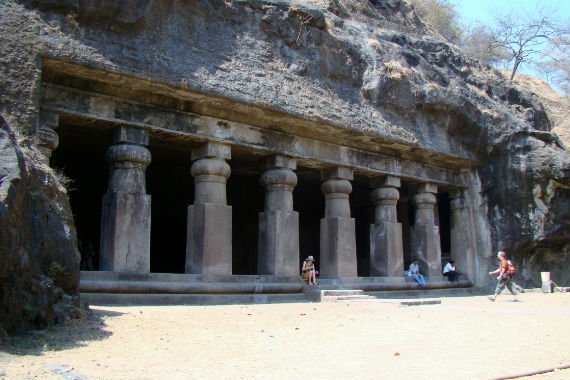
The caves contain many temples, with the five largest devoted to Hinduism. The largest of these, the Shiva Cave, is supported by many carved pillars, and each wall features stunning carvings of religious scenes. It also contains the the true masterpiece of the complex: an awe-inspiring sculpture of a three-headed Shiva, known as Trimurti (“the one with three heads”).
How to get to the Caves
The ferry from Mumbai takes one hour, and tickets are sold at the Gateway to India, the most recognisable monument in the city! In theory, there’s a clearly visible booth selling tickets just to the left of the monument. However, in India theory doesn’t always apply: it can be hard to find, with limited signage. It’s better to listen for the ticket seller loudly shouting “Elephanta”! Make sure you get on the official ferry, and not some sightseeing tour. Return tickets should be around $3 but it’s worth paying a (very cheap) fee to get space on the upper deck: it’s quieter and there are great views.
Pro-Tips for Visiting Elephanta Caves
Here’s the most important thing you need to know before visiting Elephanta Caves: there are monkeys everywhere. The island is packed with these pesky creatures, and though they are used to crowds that doesn’t mean they’re always friendly. They’ll try to steal your food, so it’s a good idea not to bother packing any: there’s plenty to buy on the island.
One thing you should do is stop to enjoy the view back over Mumbai’s skyline: that alone can make the trip worthwhile. It’s also best to bring decent shoes, it’s a little walk up the hill to the caves from where the ferry drops you off. Finally, the caves are closed on Mondays but that won’t stop them selling you a ferry ticket to the Island so watch out!
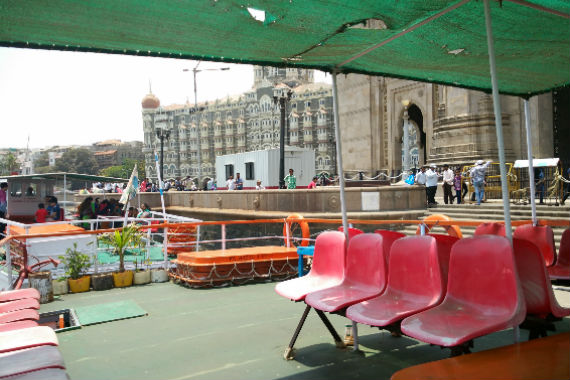
See the Elephanta Caves on a Rickshaw Challenge!
Excited to visit Elephanta Caves? See them, and everything else India has to offer by joining an adventure rally through India! If you’re crazy enough to come along, a rickshaw challenge is the best way to see the real India while having fun along the way. The Deccan Odyssey takes place in June, beginning in Panaji and ending nine days later in Mumbai. In August, The Mumbai Xpress is a two week trip from “Bollywood to Kollywood”, Mumbai to Chennai. You’ll have a chance to visit Elephanta Caves, and much more besides!




